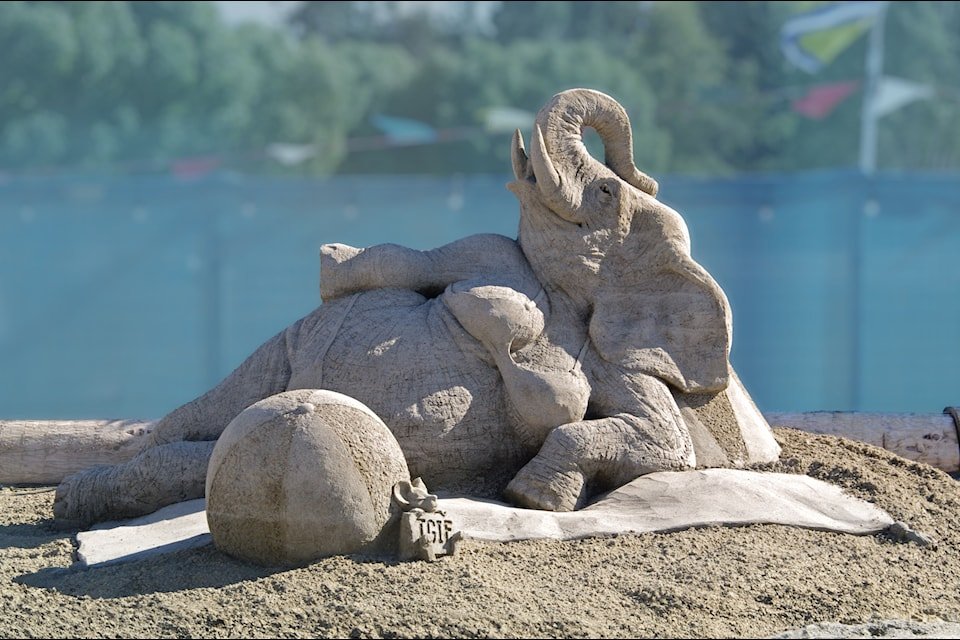A life-sized sand sculpture of a smiling elephant in a bikini resting on a beach towel brought laughter and admiration at a popular sandcastle competition in Parksville. The artwork, called T.G.I.F., was created by View Royal artist Damon Langlois and won third place from the judges. More importantly, it earned the Sculptor’s Choice Award in the solo category — a recognition from fellow artists.
Langlois shared that peer feedback means a lot to him. The feeling of support from others in the art community made the win even more meaningful.
His journey into sand sculpting began in Victoria nearly 30 years ago. He was working as an industrial product designer when a coworker — part of a sand sculpting group called Freddy and the Sandblasters — invited him to help out with an upcoming competition.
Langlois agreed and joined the team at the Harrison Hot Springs event, which at the time hosted world championship-level contests. That debut led to a second-place finish — and Langlois was immediately hooked.
He spent the next seven years sculpting at Harrison and other events, growing his skills. Back in the 1990s, sand sculpting was more casual. Artists worked in large teams, and the competitions were more about fun than perfection. Today, he says, it’s a serious art form that requires high-level skills and creativity.
Even though the field is now more competitive, Langlois is still drawn to it. One reason is the temporary nature of sand sculptures. Unlike his industrial design projects, which are built to last, sand creations disappear within days.
This gives the process a unique kind of freedom. According to Langlois, working with sand is less rigid and encourages creative problem-solving. Sculptors must understand the material, working with gravity, moisture, and time — often adjusting plans based on how the sand behaves.
There’s also a strong community around sand sculpting. Artists share stories, legends, and techniques. Before the internet, events on the Pacific Coast — such as those in White Rock and Harrison — were gathering spots for sculptors to learn from one another. It was a tight-knit group that built friendships while moving from one competition to another.
Langlois remembers the lifestyle fondly. Many artists travelled full time from show to show, often referring to it as “joining the circus.” These shared experiences built lasting bonds between artists from around the world.
Though the art form has grown in skill and recognition, there are fewer opportunities to make a living from it. Most paid work now comes from promotional events, especially in places like California. Major competitions are invite-only, and artists must show their skills to be accepted.
Parksville’s event remains one of the most important and respected sand sculpting competitions in the world. Langlois calls it “precious,” as it continues to attract top talent. It is also the only major competition currently held in Canada.
Other sculptors also stood out this year. Fred Dobbs, a former Greater Victoria artist now living on Mayne Island, teamed up with Czech artist Jakub Zimacek. Their creation, The Acrobats, reached nearly 14 feet in height and featured a large central hole — an impressive structural feat. Their design won first place in the doubles division, as well as the Sculptors’ Choice Award for that category.
The Parksville Beachfest, where the competition is held, continues through August 17. Visitors can view the sculptures daily from 9:30 a.m. to 8:30 p.m. and vote for their favorite in the People’s Choice Award category.

